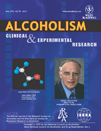Dopamine transporter gene (SLC6A3) represents a promising candidate involved in the development of alcoholism.
This study aimed to explore the association between the 9-repeat allele (A9) of a 40-bp variable number tandem repeat (VNTR) polymorphism in the 3′ un-translated region (3′ UTR) of the SLC6A3 gene and alcoholism.
This study aimed to explore the association between the 9-repeat allele (A9) of a 40-bp variable number tandem repeat (VNTR) polymorphism in the 3′ un-translated region (3′ UTR) of the SLC6A3 gene and alcoholism.
The SLC6A3 VNTR was genotyped by PCR in unrelated Mexican Americans including 337 controls and 365 alcoholics. Pearson’s chi-square test or Fisher’s exact test was used to compare the genotype and allele distribution.
Meta-analyses were performed for population-based case–control association studies of the SLC6A3 VNTR polymorphism with alcoholism. Data were analyzed under random effect models with the Comprehensive Meta-analysis (v.2) statistical software package.
Meta-analyses were performed for population-based case–control association studies of the SLC6A3 VNTR polymorphism with alcoholism. Data were analyzed under random effect models with the Comprehensive Meta-analysis (v.2) statistical software package.
In Mexican Americans, no significant difference was found in allele and genotype distribution between controls and alcoholics or between controls and alcoholics with alcohol withdrawal seizure (AWS) or delirium tremens (DT) (unadjusted p > 0.05). A total of 13 research articles were included in the meta-analyses.
No significant difference of the SLC6A3 VNTR A9 was noted between controls and alcoholics at the genotypic and allelic level when all ethnic populations, only Caucasian populations, or only Asian populations were considered (p > 0.05).
Significant associations were observed between SLC6A3 VNTR A9 and alcoholics with AWS or DT at the genotypic as well as allelic level when all ethnic populations or only Caucasian populations were considered (p < 0.05, OR 1.5–2.1).
No significant difference of the SLC6A3 VNTR A9 was noted between controls and alcoholics at the genotypic and allelic level when all ethnic populations, only Caucasian populations, or only Asian populations were considered (p > 0.05).
Significant associations were observed between SLC6A3 VNTR A9 and alcoholics with AWS or DT at the genotypic as well as allelic level when all ethnic populations or only Caucasian populations were considered (p < 0.05, OR 1.5–2.1).
Meta-analyses suggest a possible association between the SLC6A3 VNTR A9 and alcoholic subgroup with AWS or DT.
Read Full Abstract
Request Reprint E-Mail: ywan@kumc.edu
Read Full Abstract
Request Reprint E-Mail: ywan@kumc.edu
